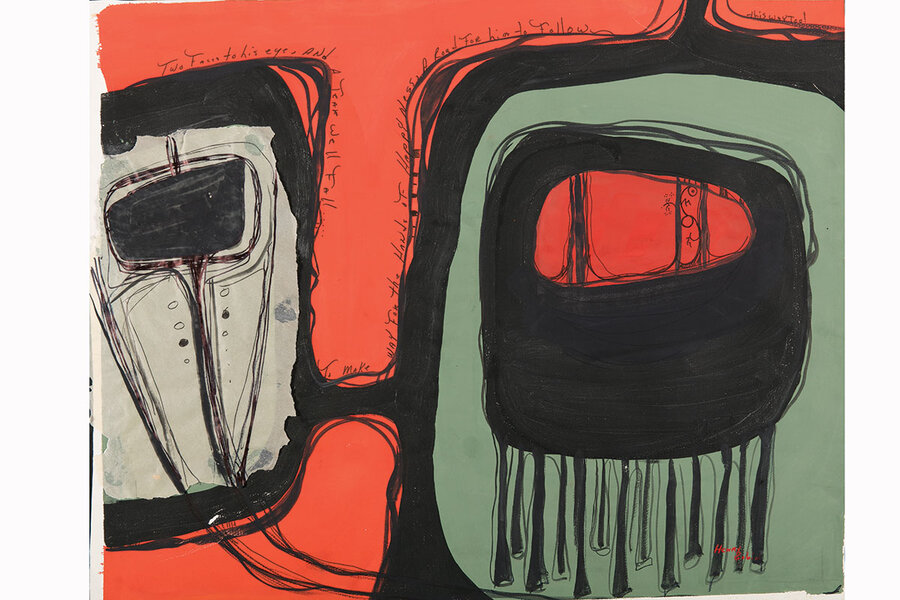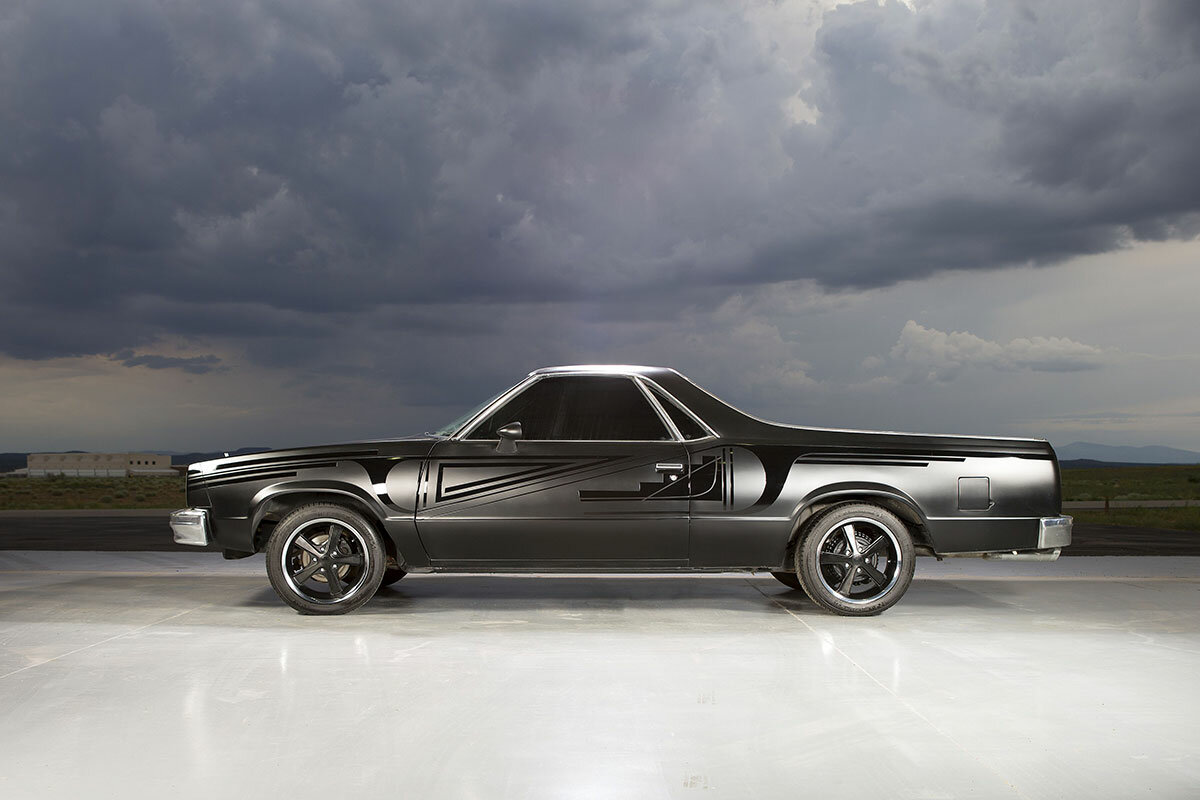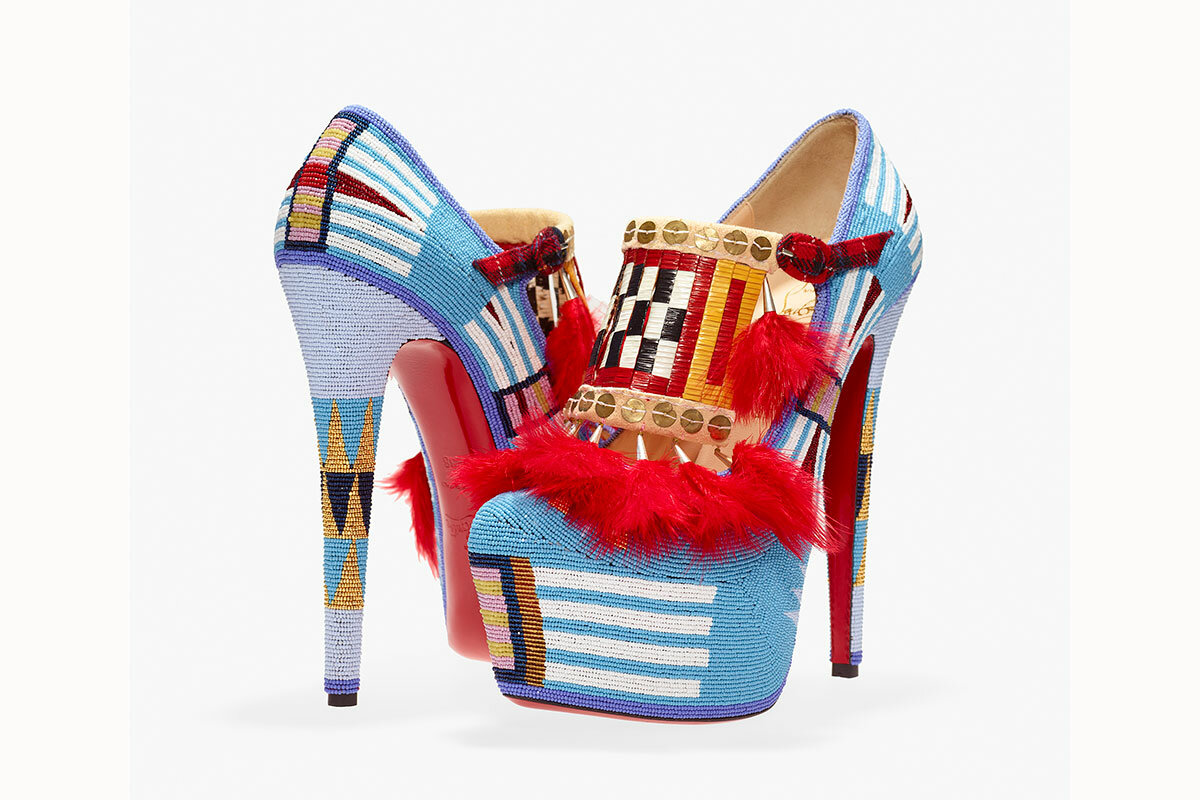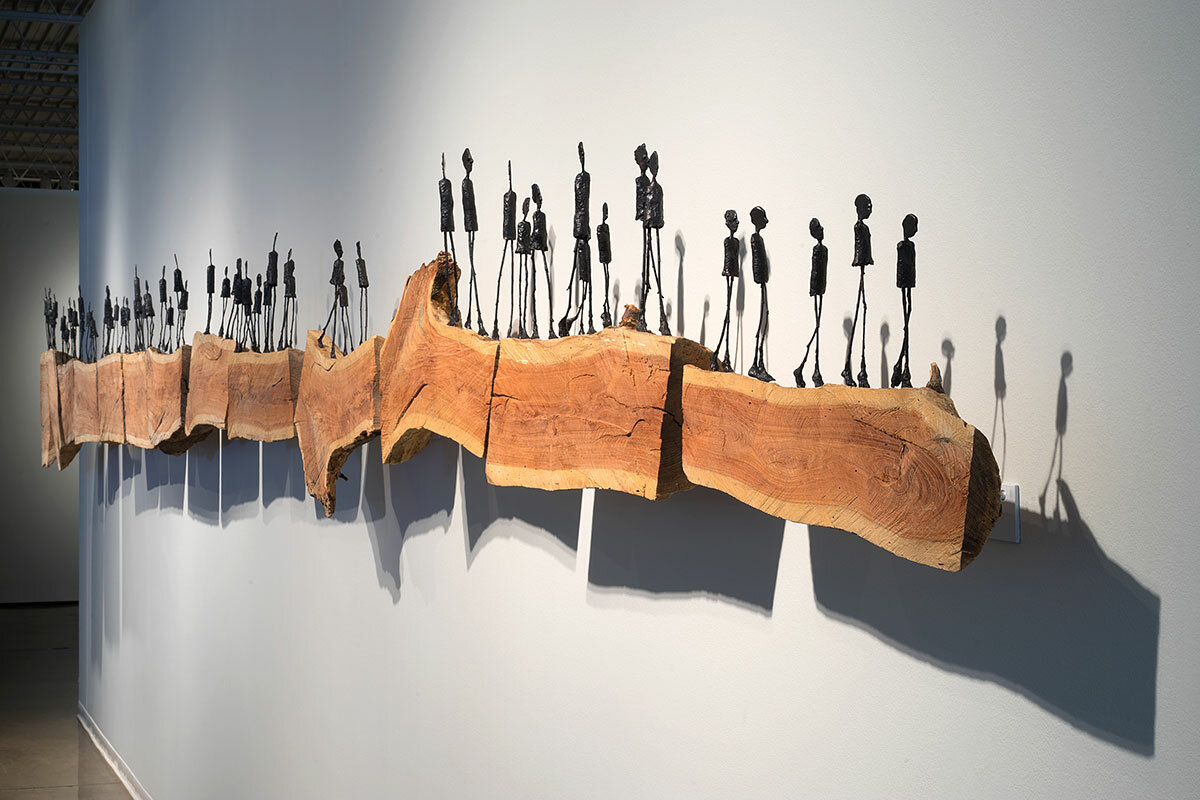From moccasins to Louboutins: an evolution of indigenous art
Loading...
Patsy Phillips still occasionally gets visitors looking for “beads and feathers and baskets” at the Museum of Contemporary Native Arts in Santa Fe, New Mexico.
But, increasingly, she finds herself welcoming art lovers who don’t settle for cliche. They embrace work in paint, clay, textiles, and video that draws from personal, cultural, and historical roots. This new Native American art expresses individualism in the face of racism, poverty, and a sense that other voices have too long told the world what living American Indian art should be.
“Contemporary Native artists are doing exceptional work. They have been doing it. And now they’re getting recognition,” says Ms. Phillips, the museum's director.
Why We Wrote This
American Indian art encompasses more than dream catchers, totem poles, and basketry. The art world is waking up to a new appreciation for contemporary Native art – and the artists behind it.
Long considered anthropological artifacts from a past era, American Indian art may finally be getting its due. The recognition comes in the form of major solo shows, ambitious surveys, and opportunities for Native artists to create and speak for themselves on the world stage. There’s been a shift in how Native art is presented and perceived – as art rather than artifact, with recognition for the individual artist – that suggests a greater appreciation for the culture and people behind the art, say observers in the art world.
The growing prominence of Native contemporary art is due in part to opportunities Native curators have had to tell their own stories at places such as the National Museum of the American Indian, which opened on the National Mall in 2004, says Phillips, who is Cherokee. She also credits Nancy Mithlo, a Chiricahua Apache anthropologist, for organizing the first exhibition of contemporary Native American art curated by a Native American at the Venice Biennale, one of the world’s most prestigious international cultural festivals. That 1999 exhibition helped introduce Native American artists to international audiences who were free of preconceptions, says Phillips.
Indigenous art across the nation
A new appreciation for American Indian art has brought into focus the contributions of women, a creative force in Native art. “Hearts of Our People,” an exhibit of the work of Native women artists from early practitioners to contemporary creatives opens next June at the Minneapolis Institute of Art and later travels to the Frist Art Museum in Nashville, Tenn.; the Smithsonian American Art Museum in Washington, D.C.; and the Philbrook Museum of Art in Tulsa, Okla.
The 115 objects in the exhibit are assembled from the Minneapolis Institute of Art’s permanent collection and from more than 30 other institutions and private collections. They range from an 18th century caribou hide hunting coat to a new textile piece commissioned for the show from Navajo master weaver DY Begay.
“The voices of these women are coming through,” says Teri Greeves, an award-winning Kiowa Indian beadwork artist, who collaborated as a curator on the exhibit.
Native American artists are also being celebrated at solo shows, exhibitions that spotlight the work of one artist. Oklahoma-based sculptor Holly Wilson has a solo show through January at the Museum of Contemporary Native Arts which is part of Santa Fe's Institute of American Indian Arts. The exhibit is at once haunting and striking, featuring attenuated bronze sculpture against a stark white backdrop. Her pieces have Giacometti limbs and poignant faces that seem on the verge of speech, of telling a story. Ms. Wilson, who is Delaware and Cherokee, notes that Santa Fe draws art lovers from all over the world who appreciate her small, wraithlike figures that touch on big themes – innocence, tolerance, resilience.
Men and women, children and adults from different nations and ethnicities are all able to connect with the art, Wilson says.
“There was no line that you couldn’t cross to get to the work,” she says.
‘The living artist’
At the Denver Art Museum (DAM) the focus is also on the artist. Rather than treat Native art as historical artifacts of a dead civilization, the museum has, since the 1920s, “put an emphasis on the living artist,” says John Lukavic, DAM’s curator of Native arts.
Mr. Lukavic and late chief curator Nancy Blomberg, an ardent champion of American Indian art, started a residency program for Native artists in 2012 to give them the space, time, and “resources to push their practice,” Lukavic says.
One such artist is Jeffrey Gibson, a Mississippi Choctaw and Cherokee painter and sculptor who used his DAM residency to explore the museum’s collection of American Indian art and his own evolving interest in video. Mr. Gibson layers pigment, fabric, beads, the jingles that adorn powwow regalia, and even music into intricate art on punching bags, canvases, and sculpture.
Gibson’s first major exhibition debuted at the DAM in May. The show is currently at the Mississippi Museum of Art until Jan. 21, then travels to the Seattle Art Museum and the Madison Museum of Contemporary Art in Madison, Wis.
“I feel like I’m definitely being acknowledged and heard by people who I don’t think were aware of me before,” Gibson says.
He says he’s been told calling himself a Native American artist “just seems so limiting.”
“That’s exactly why I identify as a Native American artist. It’s important for people’s expectations to be expanded,” says Gibson. “In the future we might be leaving an art world in which young Native Americans might feel comfortable.”








